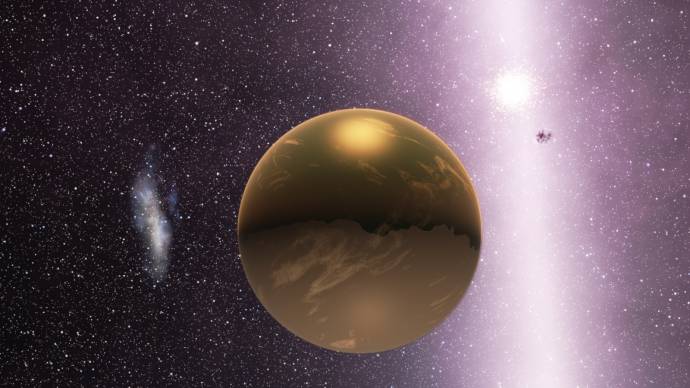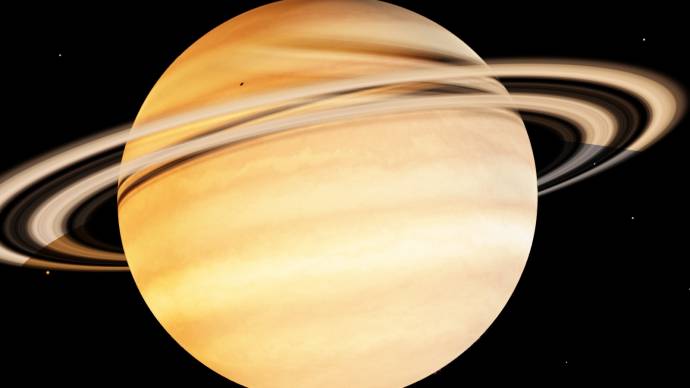|
Challenge: The Photodetective Game
|
|
| JCandeias | Date: Friday, 21.02.2014, 15:37 | Message # 151 |
 Pioneer
Group: Translators
 Portugal
Portugal
Messages: 387
Status: Offline
| Yes and no. It's a neutron star, but since a pulsar is a kind of neutron star, I'll accept it. The neutron star is in front of the brown dwarf, its gravity distorting the light that comes from it, giving it this asymetric look.
Your turn.
They let me use this!

|
| |
| |
| spacer | Date: Friday, 21.02.2014, 16:15 | Message # 152 |
 Star Engineer
Group: Users
 Israel
Israel
Messages: 1258
Status: Offline
| naaa, take my turn  (i dont know why but i cant post images, i will try to fix that later) (i dont know why but i cant post images, i will try to fix that later)
"we began as wanderers, and we are wanderers still"
-carl sagan
-space engine photographer
|
| |
| |
| JCandeias | Date: Friday, 21.02.2014, 16:44 | Message # 153 |
 Pioneer
Group: Translators
 Portugal
Portugal
Messages: 387
Status: Offline
| Oh? Strange, that. This forum has a few strange bugs from time to time.
Oh well, in that case, who can tell me what's going on here?

They let me use this!

|
| |
| |
| DeathStar | Date: Friday, 21.02.2014, 16:58 | Message # 154 |
|
Pioneer
Group: Users
 Croatia
Croatia
Messages: 515
Status: Offline
| Tidally locked oceania with a binary partner of the main star illuminating the frozen side. The planet is in the small magellanic cloud, you can see the LMC on the left and a nebula on the right.
Edited by DeathStar - Friday, 21.02.2014, 16:59 |
| |
| |
| JCandeias | Date: Friday, 21.02.2014, 17:03 | Message # 155 |
 Pioneer
Group: Translators
 Portugal
Portugal
Messages: 387
Status: Offline
| Right on.
Your turn.
They let me use this!

|
| |
| |
| spacer | Date: Friday, 21.02.2014, 22:35 | Message # 156 |
 Star Engineer
Group: Users
 Israel
Israel
Messages: 1258
Status: Offline
| Quote JCandeias (  ) Oh? Strange, that. This forum has a few strange bugs from time to time.
i dont think this is the site problem, i dont post images from sites, i will try to post from sites like everyone 
"we began as wanderers, and we are wanderers still"
-carl sagan
-space engine photographer
Edited by spacer - Friday, 21.02.2014, 22:35 |
| |
| |
| JCandeias | Date: Sunday, 23.02.2014, 20:44 | Message # 157 |
 Pioneer
Group: Translators
 Portugal
Portugal
Messages: 387
Status: Offline
| Well, it's been two days now, so I guess DeathStar isn't going to post an image. So here's another one of mine.
Who can tell me what's going on here?

They let me use this!

|
| |
| |
| spacer | Date: Sunday, 23.02.2014, 21:00 | Message # 158 |
 Star Engineer
Group: Users
 Israel
Israel
Messages: 1258
Status: Offline
| gas giant with rings that orbit yellow and orenge stars (1 star in each side) the real planet bright is off and there is moons
"we began as wanderers, and we are wanderers still"
-carl sagan
-space engine photographer
Edited by spacer - Sunday, 23.02.2014, 21:00 |
| |
| |
| JCandeias | Date: Sunday, 23.02.2014, 21:25 | Message # 159 |
 Pioneer
Group: Translators
 Portugal
Portugal
Messages: 387
Status: Offline
| Hm... there's one incorrect thing there, or at least one thing you didn't make clear... tell me more about the orbits, please.
They let me use this!

|
| |
| |
| Inspector_Gadget | Date: Monday, 24.02.2014, 11:56 | Message # 160 |
|
Observer
Group: Newbies
 Denmark
Denmark
Messages: 5
Status: Offline
| Gas giant with rings. On the left side is an orange dwarf, right side yellow dwarf. The gas giants orbit is not plane so the ring shadows are cast on different angles. Several moons including one that cast it's shadow on the left side.
|
| |
| |
| JCandeias | Date: Tuesday, 25.02.2014, 22:59 | Message # 161 |
 Pioneer
Group: Translators
 Portugal
Portugal
Messages: 387
Status: Offline
| Ah, but which star does this planet orbit? You can deduce that from the image.
I can also tell you one other thing you can't see from the image alone: the star in the right isn't one, but two -- a G and F close binary.Added (26.02.2014, 01:59)
---------------------------------------------
No takers?
Well, then, I'll explain.
A K main sequence star is both less massive and (much) less luminous than a G or F star.. And, since there are far, far more stars in the main sequence than there are stars outside of it, one can safely assume that those are main sequence stars (and indeed they are).
Now, both sides of the planet are more or less equally lit. This can only happen if the K star is much closer to it than the G+F pair, and that in turn means that the planet has to orbit the K star.
So it doesn't "orbit yellow and orange stars", as spacer said, but only the orange member of the multiple system. And that's why I'm going to give it to Inspector_Gadget: he was closer to the right answer.
Your turn to post a pic.
They let me use this!

|
| |
| |
| Inspector_Gadget | Date: Friday, 28.02.2014, 08:58 | Message # 162 |
|
Observer
Group: Newbies
 Denmark
Denmark
Messages: 5
Status: Offline
| I'll get a picture today. This is a fun game 
|
| |
| |
| Leparus | Date: Saturday, 12.04.2014, 14:40 | Message # 163 |
|
Space Tourist
Group: Users
 Germany
Germany
Messages: 20
Status: Offline
| Is this thread still alive? I have a picture that I would show you, but of course I don't want to play against the rules 
|
| |
| |
| HarbingerDawn | Date: Saturday, 12.04.2014, 15:50 | Message # 164 |
 Cosmic Curator
Group: Administrators
 United States
United States
Messages: 8717
Status: Offline
| If someone has gone this long without posting a picture, then you can post one  Though I don't know how many people would still be interested in playing the game. But you could try. Though I don't know how many people would still be interested in playing the game. But you could try.
All forum users, please read this!
My SE mods and addons
Phenom II X6 1090T 3.2 GHz, 16 GB DDR3 RAM, GTX 970 3584 MB VRAM
|
| |
| |
| Leparus | Date: Sunday, 13.04.2014, 21:10 | Message # 165 |
|
Space Tourist
Group: Users
 Germany
Germany
Messages: 20
Status: Offline
| Ok here is my picture (listed as attachment, because I can't figure out how to display a pic inside my post):
|
| |
| |